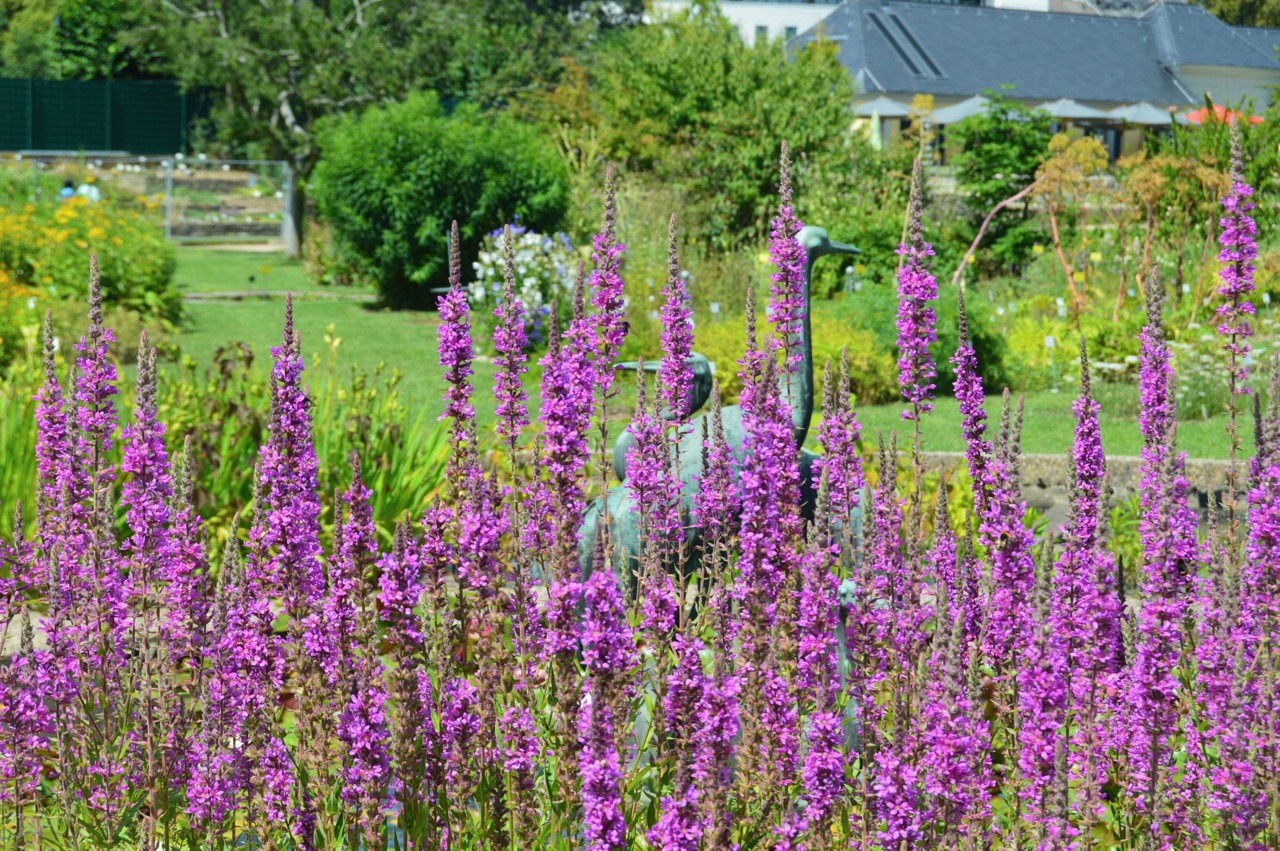Bonn is beautiful!
And I’m not just saying that because you can buy cheap Haribos in bulk there.
Bonn is the birthplace of Beethoven and, yes, Haribos. But it’s also a relatively compact city with a good ratio of green spaces to concrete – at least for a German urban center.
And the most gorgeous green oasis you’ll find in the city is the botanical garden at the University of Bonn.
If you want a little bit of peace and tranquility away from the bustling humdrum of traffic, head towards the Poppelsdorf Palace and step into the baroque garden surrounding it. You’ll find yourself in the middle of a vast botanical kingdom encompassing over 11,000 species spread over 13 hectares and numerous glasshouses – a fern house, palm house, succulent house, orchid house, Mediterranean house and geophyte house, to name a few.
Since it’s associated with the University, this is mainly a teaching and research garden, and has been so since the founding of the University in 1818. The focus of the research at the moment is on epiphytes, carnivorous plants, ancient flowering plants, and the mapping of global patterns of biological diversity.
The focus of your visit, though, can be on how Instagramable the garden is. Or just on how you can relax and read a good book in the middle of a leafy arboretum.

Here are nine things you should know to make the most of your visit to Bonn Botanical Garden.
3 things you should KNOW about Bonn Botanical Garden
+ Behold the magic word when you visit any place of botanical worship: FREE. The Bonn botanical garden is free to visit during weekdays and very affordable during Sundays (like, three-euros-admission type of affordable). The garden is always closed on Saturdays, so plan accordingly. And if you’re one of those people who didn’t plan or check beforehand, please be so kind as to not leave a one-star review because you found the garden closed. It’s not nice.
+ The Botanic Gardens of the Rheinische Friedrich Wilhelms Universität – its formal name – developed from renaissance gardens that surrounded a medieval moated castle. The more recent baroque garden was built around 1720, and it is unchanged in its basic structure to this day.
+ Even though the First World War left it unscathed, the garden suffered significant damage during the Second World War. Its reconstruction took place between 1979 and 1984.

3 things you should SEE when you visit Bonn Botanical Garden
+ If there’s ever a Victorian glasshouse in a botanical garden, just assume we’re going to recommend you see it. And this particular Victorian greenhouse is where the Nymphaea gigantea, an Australia-native, will awe you with its spectacular leaves and even more spectacular blooms. There’s also a giant water lily (Victoria cruziana) that blooms at night. And get this: at first, the flower is white and it closes during the day, but the following night it opens up to reveal striking dark pink petals. And just in case you’ve had enough of large water lilies, you can also admire the smallest European water lily (Nymphaea tetragona). It’s super cute!
+ The succulent glasshouse. Succulents and cacti, say no more. If you’re into “living stones” (Lithops), there’s plenty of them in this room. While their photogenic nature is turning lithops into the Instagram plant du jour, these hardy succulents are being studied at the Bonn botanical garden due to their ability to adapt to their environment. Their leaves may shrink and even disappear below ground level during drought.
+ The arboretum is an amazing place to stroll through in every season. Because the gardens are so old, the trees that comprise the arboretum are tall and majestic. A few of the trees are “champion trees” or “record trees” – a designation awarded by the German Dendrological Society to promote awareness of the importance of protecting tree species.

3 things you should LOOK FOR when you visit Bonn Botanical Garden
+ Look for the Corpse plant (Titan Arum). This Indonesia-native blooms very rarely and its inflorescence can reach up to two meters in height. It was discovered in the nineteenth century by the Florentine botanist Odoardo Beccari in Sumatra, then sent to Kew Gardens and subsequently spread to botanical gardens around Europe and the United States.
Only about 125 such plants have flowered worldwide since the plant’s discovery. It is an impressive spectacle when the plant opens up. But after having witness such a display at the Phipps Botanical Garden in Pittsburgh, I can tell you that it really does smell foul.
+ Look for the lizard in the tropical greenhouse. Or better yet, he’ll be looking at you while you’re trying to figure out what’s that moving mount under the foliage. Spoiler alert: it’s the lizard.
+ Look for the terrace overlooking the gardens. You can enjoy a cold beer on a hot day or a hot cappuccino on a cold day. Or the other way around, we’re not judging.

Please tell me I’ve convinced you to visit the Botanical Garden in Bonn. If you’re not convinced, I might lose my botanical garden fanatic badge. (There’s no badge, but there should be one!)



More botanical garden guides this way:
Visit Cologne Botanical Garden
If you want to read more about houseplants and gardening, hop on my once-a-month newsletter list. There’s no endless email sequence here. Just a monthly email to keep in touch and chat about plants.

